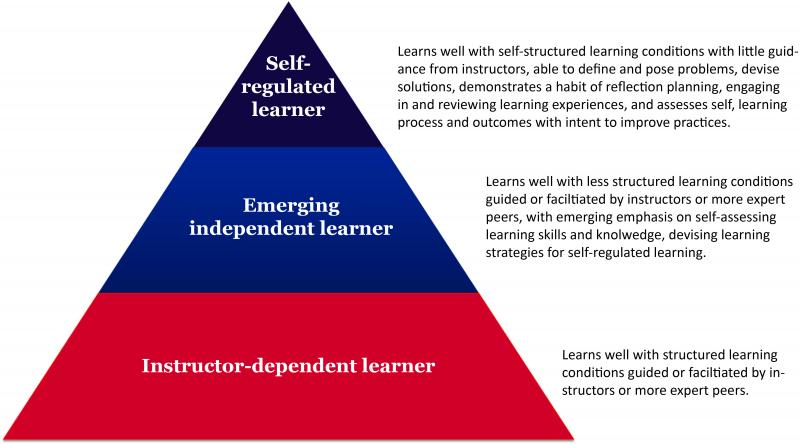Professionals are lifelong, self-regulated learners. Students progress from novices to experts and, eventually, masters of their field or specialty, who in turn will mentor the next generation.
An overarching goal of medical education is to assist medical students in becoming, lifelong self-regulated learners. In other words, we need to teach them how to learn so they can move away from instructor-dependent learning to self-directed learning.
Self-Regulated Learning
Self-regulated learners generate outcomes by engaging consciously and deliberately in productive learning activity that is, using tools, resources and various funds of declarative and procedural knowledge to mediate learning. In instructor-led learning, the educator's role is to provide strategic guidance to the learner in negotiating zones of development so that the learning objective is proximal, within reach. These are called zones of proximal development (ZPDs). A developmental curriculum guides students from becoming instructor-dependent to self-regulated learning.

Long-range Learning Goals
When it comes to achieving long-term goals, the educator must consider how to create successive learning experiences, each building on the prior, to move the learner closer to achieving the distal goal. These successive experiences are cumulative zones of proximal development, and, as a whole, comprise a zone of distal development (ZDD). The ZDD requires the learner and educator to be metacognitive – aware of how they are planning, engaging and contemplating the acquisition of tools for teaching and learning, developing specific skills, procedural and other funds of knowledge, and must involve the strategic choice of methods of instruction and learning.
The Organizing Circumstance of Learning/Teaching
An effective approach to teaching and learning, then, imagines the educator and learner as reflective for, in and on the learning experience (Plack & Santasier, 2004*) as they consider the:
-
Conditions for learning (the advantages for and constraints on the learning situation);
-
Purpose or motivation of learning;
-
Funds of knowledge for learning (those available and accessible to the learner); and
-
Learning demands of the situation (proximity of the learning objectives and the long term goals).
The Laboratory for Comparative Human Cognition at USCD has an active network of scholars who discuss these issues regularly and a variety of scholarly resources, including published articles on teaching, learning and development.
Related Resources

